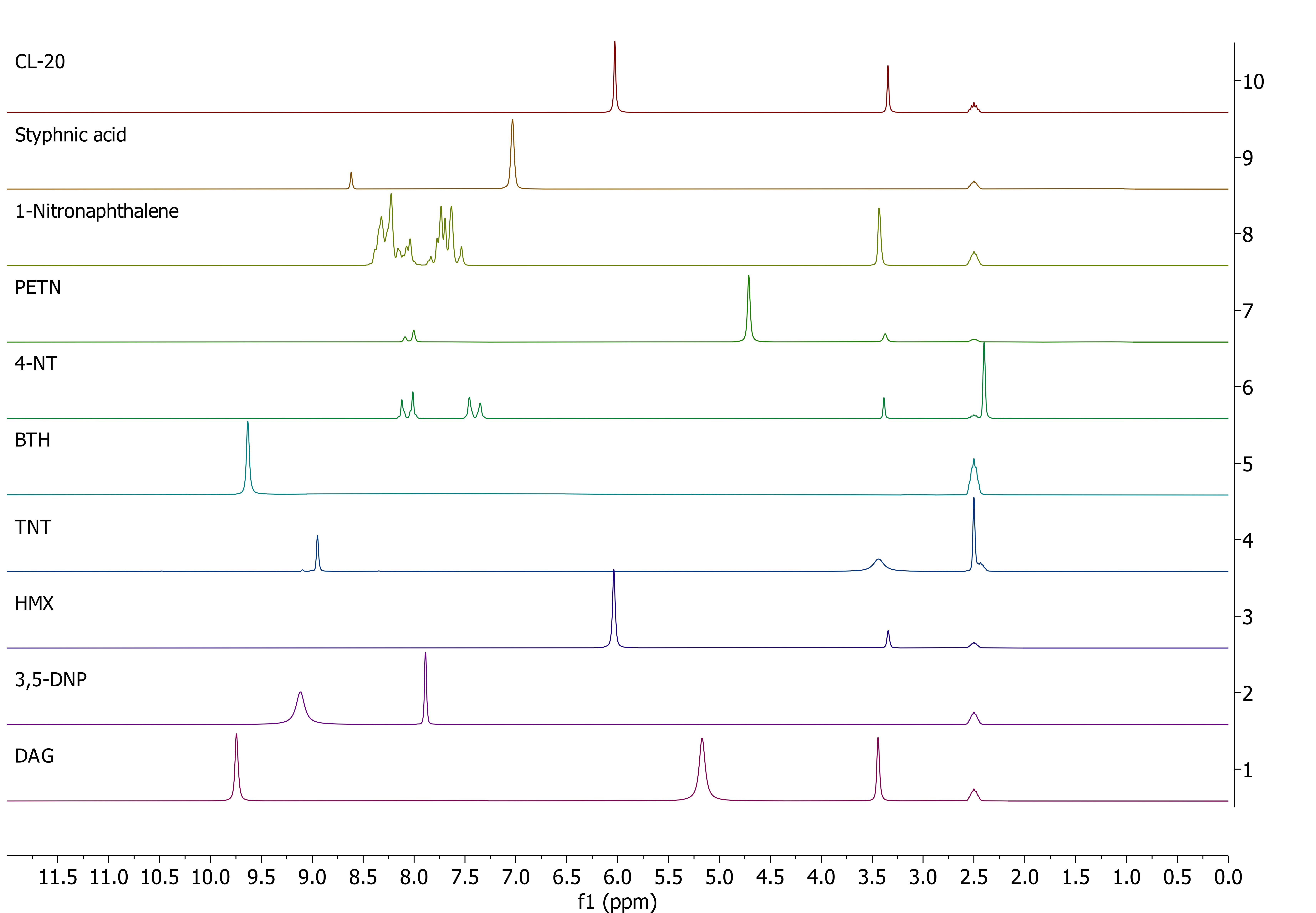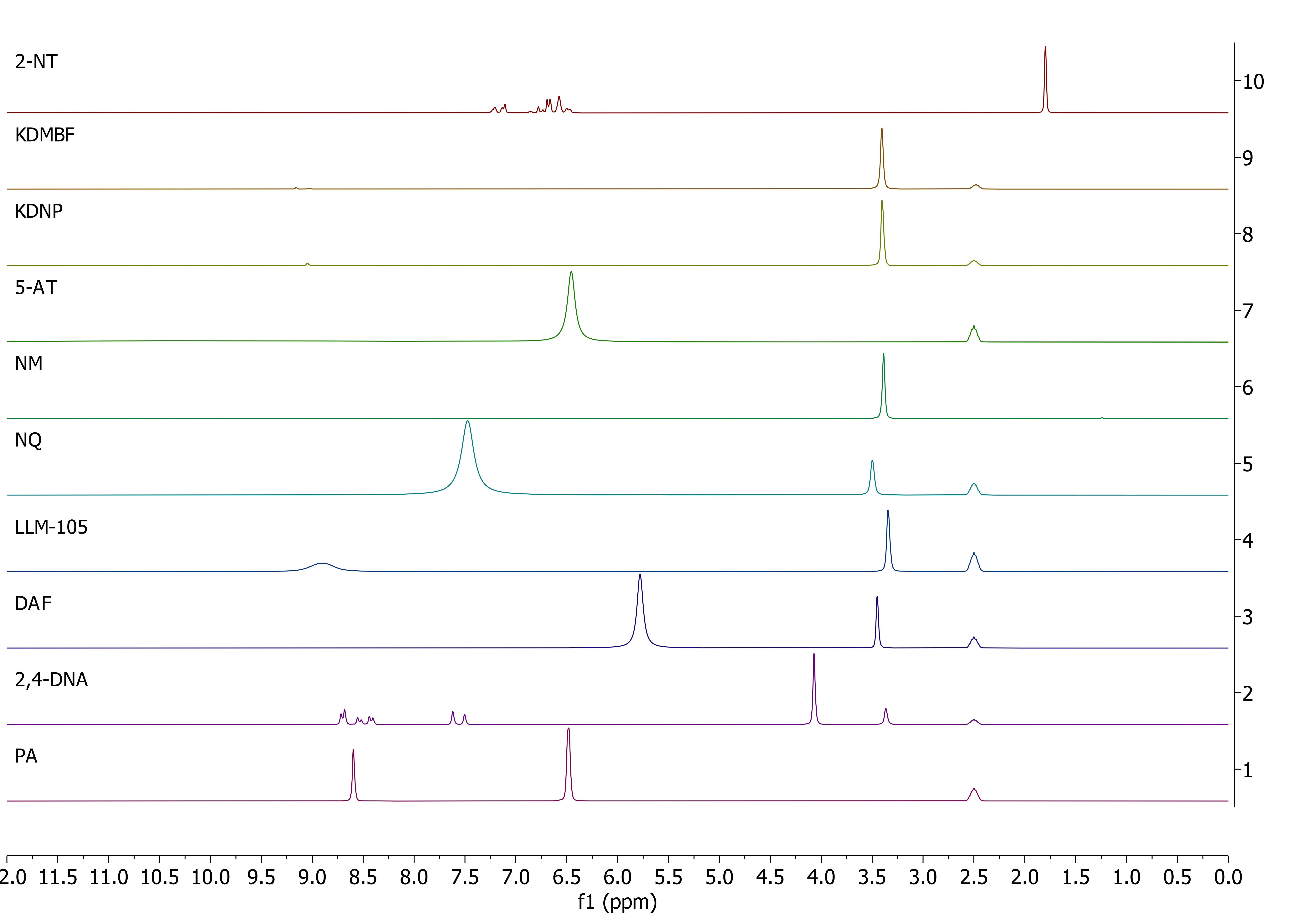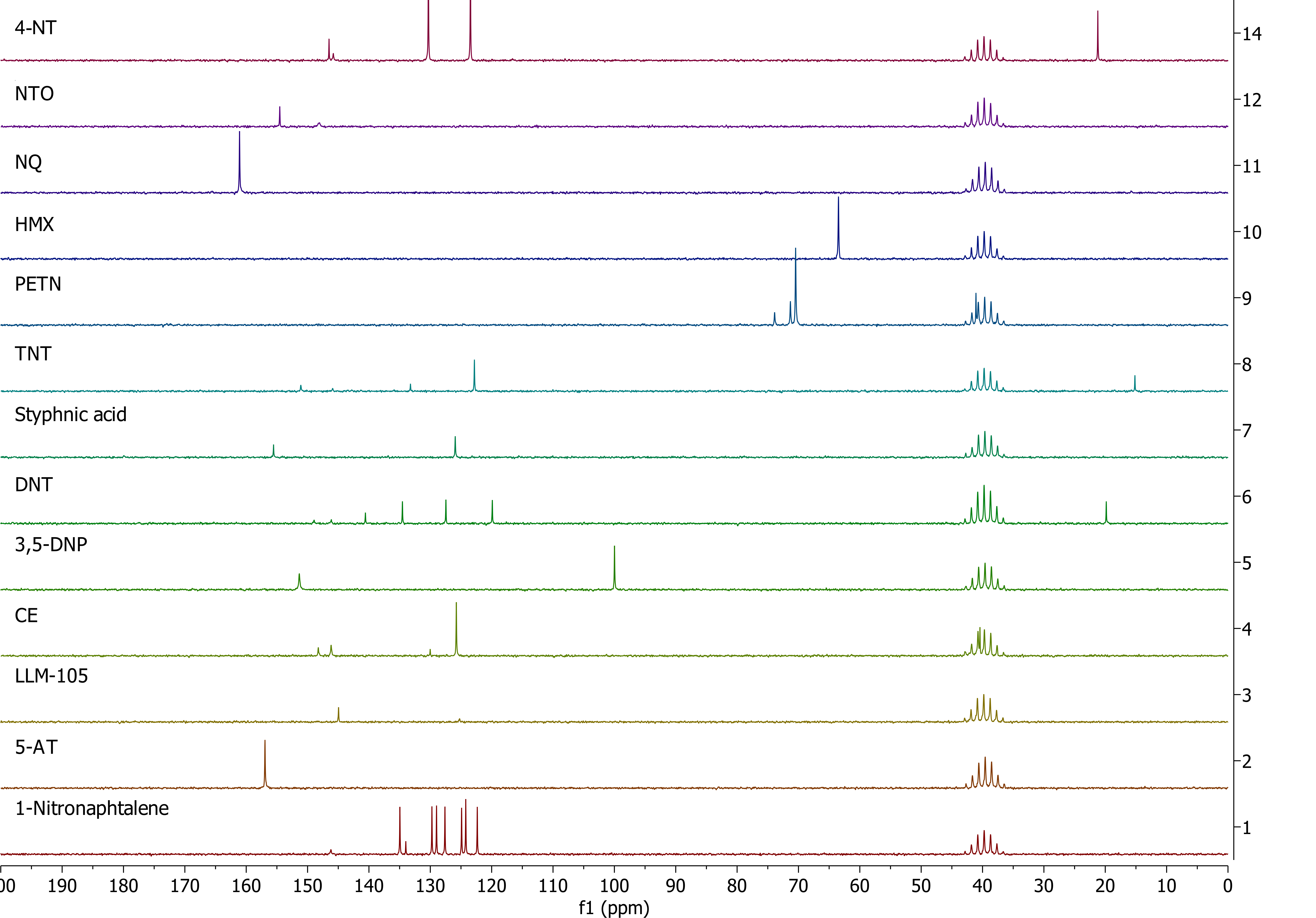Small footprint mobile NMR spectrometers, like the Spinsolve, able to acquire high resolution NMR spectra with negligible operating costs are widely expanding the application field of NMR spectroscopy. The mentioned characteristics of the benchtop NMR system are demanded by applications in forensics science, where it is often highly desirable to carry out compound identification in a simple, fast, and reliable way directly in the field. This could for example be at security or custom controls at borders, airports, or even in mobile labs, which can be directly brought to the location where it is required.
Besides the high sensitivity and excellent resolution that is required to keep the measurement times short, it is also mandatory that the spectrometer is robust, very stable, and easy-to-use as the measurements are not necessarily carried out by trained scientists. The Spinsolve 80 Carbon system provides these properties and can acquire full 1D and 2D NMR spectra for a variety of nuclei present in samples with very low concentrations in just a few minutes. The compounds can then be identified by automatically comparing the acquired spectra against a spectra database of known hazardous substances.
The results shown in this blog post were acquired during a collaborative project with Prof. Dr. Karaghiosoff at the Ludwig-Maximilians-Universität München funded by the German Federal Ministry for Economic Affairs and Climate Action.
Figure 1: 1D 1H spectra of several explosives (in DMSO-d6) measured on a Spinsolve 80 MHz Carbon system (parameter: rep. 30 s, pa 90°, 32 scans). The singlet peak at 3.33 ppm in some cases represents the residual water of the utilized DMSO.
Figure 2: 1D 1H spectra of several explosives (in DMSO-d6) measured on a Spinsolve 80 MHz Carbon system (parameter: rep. 30 s, pa 90°, 32 scans).
For all substances, nearly every peak could be detected baseline-separated which was crucial for a full assignment of the signals and identification of the explosive scaffolds. Additionally, 13C NMR spectra of the same samples were collected to even provide a higher degree of separation of the different signals and to fully verify their structures. Although at least for this set of samples, the carbon data was not needed for identification, 13C spectra provide crucial information to verify the chemical structures. Particularly since most explosive scaffolds consist of highly functionalized heteronuclear moieties like nitrogen, in many cases a limited amount of 1H signals can be detected. Consequently, an option to additionally analyze various NMR nuclei on one system is of great benefit.
In Figure 3 the corresponding 13C NMR spectra of some hazardous compounds are presented.
Figure 3: 1D 13C spectra of several explosives (in DMSO-d6) measured on a Spinsolve 80 MHz Carbon system (parameter: rep. 5 s, pa 45°, 4k scans).
The explosives were prepared with a higher concentration of 1 mol/L to acquire the 13C NMR spectra with very high signal-to-noise ratio to upload the data into our Spinsolve database. Thanks to the larger chemical shift spreading of 13C, compared to 1H, it is considered a powerful alternative to 1H NMR for the identification chemical moieties. For the samples measured in this application note, all peaks necessary for a full structure verification were detected with no significant overlapping. Besides identification, in one of our latest blog posts, we have showed that 13C NMR can also be utilized for the quantification of single components in complex mixtures (Quantification of single components in complex mixtures by 13C NMR). Although, this has not been investigated here, it can be a good alternative for samples where 1H does not provide the required resolution. Table 1 summarises all abbreviations used in the figures.
Table 1: Summary of abbreviations employed.
| Chemical abbreviation | Full chemical name |
| CL 20 | Hexanitrohexaazaisowurtzitane |
| PETN | [3-Nitrooxy-2,2-bis(nitrooxymethyl)propyl] nitrate |
| 4-NT | 4-Nitrotoluene |
| BTH | 1,2-Ditetrazolylhydrazine |
| TNT | 2,4,6-Trinitrotoluene |
| HMX | 1,3,5,7-Tetranitro-1,3,5,7-tetrazocane |
| 3,5-DNP | 3,5-Dinitrophenol |
| DNT | 2,4-Dinitrotoluene |
| DAG | Diacylglycerol |
| 2-NT | 2-Nitrotoluene |
| KDMBF | Potassium 4,5-bis(dinitromethyl)furoxanate |
| KDNP | Potassium-5,7-dinitro-[2,1,3]-benzoxadiazol-4-olate-3-oxide |
| 5-AT | 1H-1,2,3,4-Tetrazol-5-amine |
| NM | Nitromethane |
| NQ | 1-Nitroguanidine |
| LLM-105 | 2,6-Diamino-3,5-dinitropyrazine-1-oxide |
| DAF | Diaminofurazan |
| 2,4-DNA | 2,4-Dinitroanisole |
| PA | 2,4,6-Trinitrophenol |
| NTO | Nitrotriazolone |
| CE | N-Methyl-N-2,4,6-tetranitroaniline |


